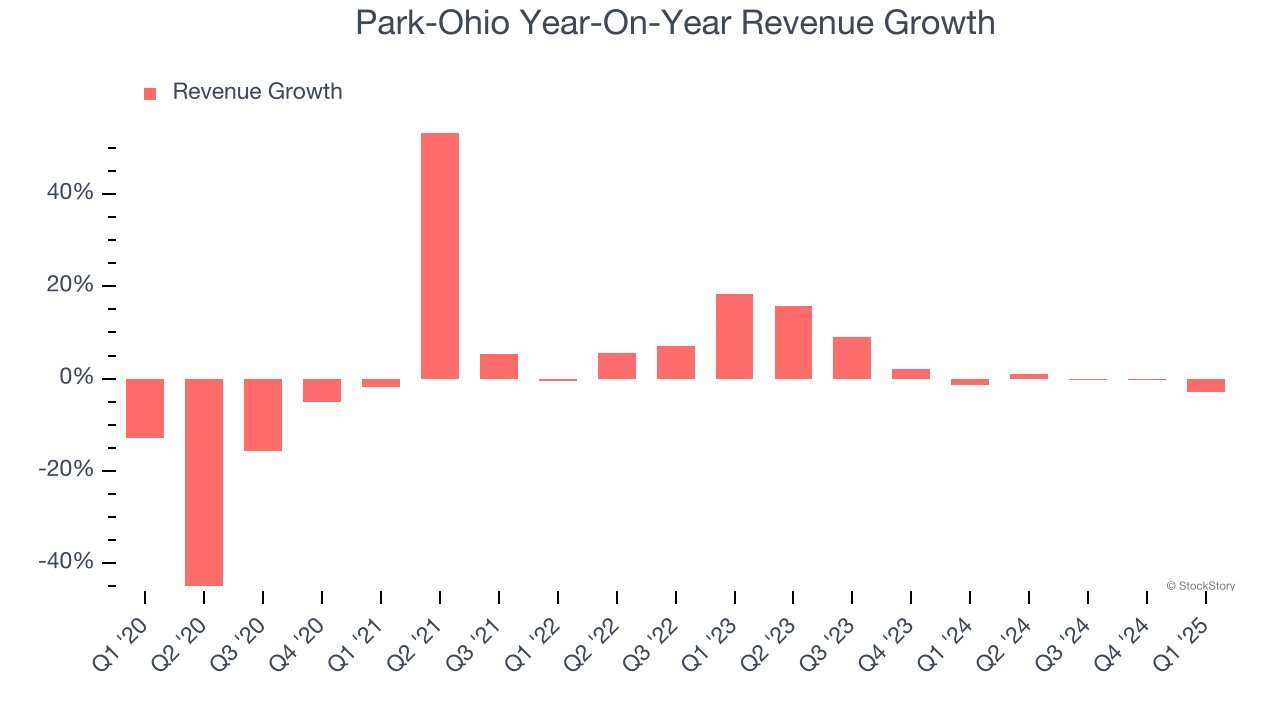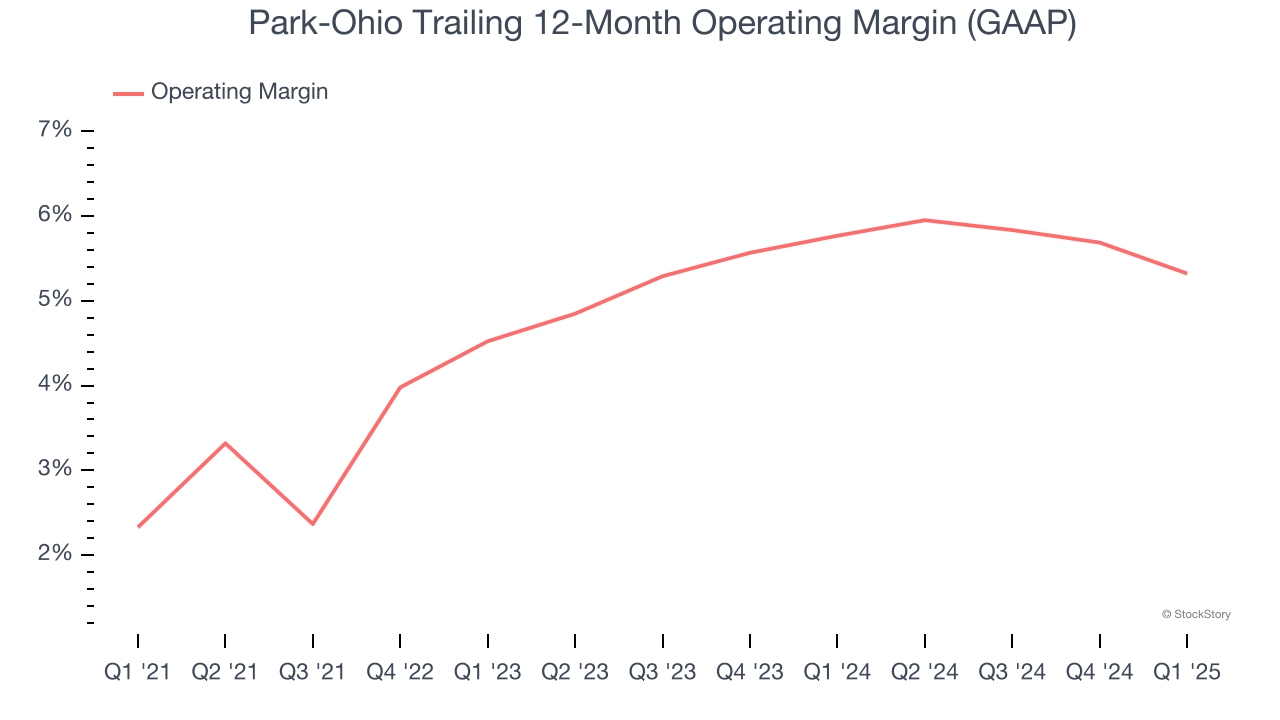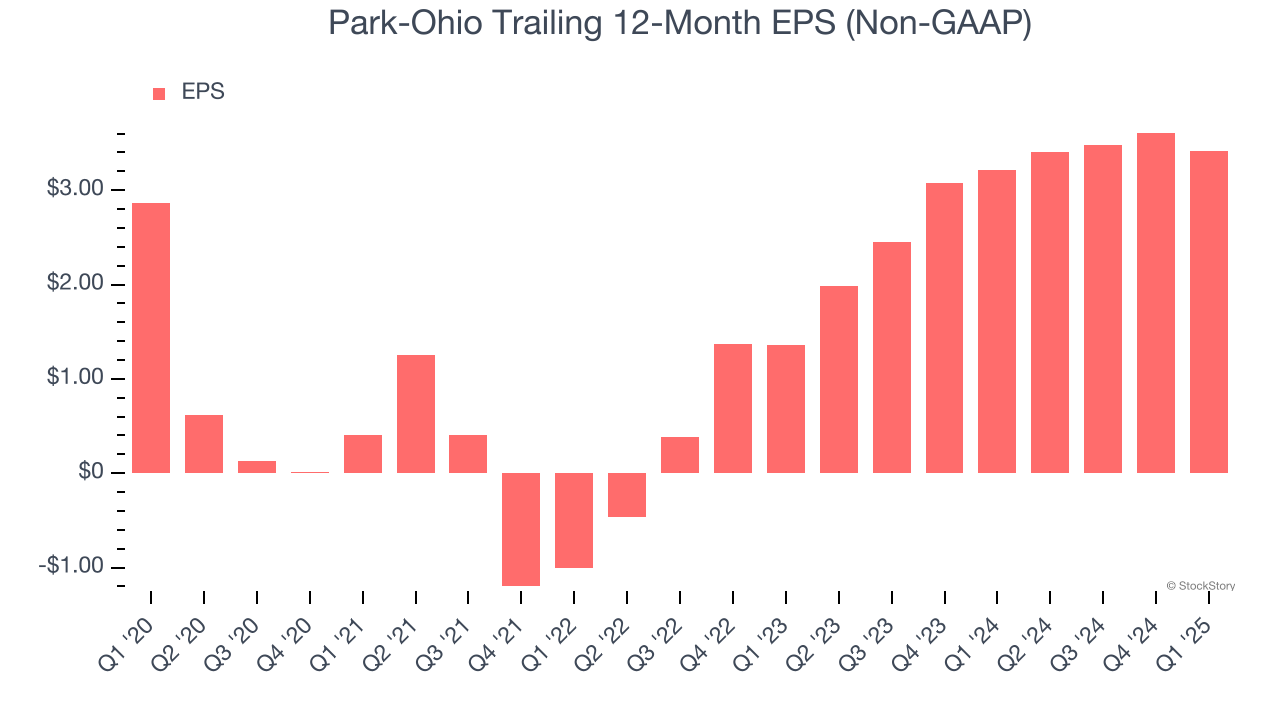
Diversified manufacturing and supply chain services provider Park-Ohio (NASDAQ: PKOH) missed Wall Street’s revenue expectations in Q1 CY2025, with sales falling 2.9% year on year to $405.4 million. The company’s full-year revenue guidance of $1.65 billion at the midpoint came in 1.5% below analysts’ estimates. Its non-GAAP profit of $0.66 per share was 21% below analysts’ consensus estimates.
Is now the time to buy Park-Ohio? Find out by accessing our full research report, it’s free.
Park-Ohio (PKOH) Q1 CY2025 Highlights:
- Revenue: $405.4 million vs analyst estimates of $425.5 million (2.9% year-on-year decline, 4.7% miss)
- Adjusted EPS: $0.66 vs analyst expectations of $0.84 (21% miss)
- Adjusted EBITDA: $33.9 million vs analyst estimates of $36.75 million (8.4% margin, 7.8% miss)
- Adjusted EPS guidance for the full year is $3.25 at the midpoint, roughly in line with what analysts were expecting
- Operating Margin: 4.7%, down from 6.1% in the same quarter last year
- Free Cash Flow was -$19.5 million compared to -$7.1 million in the same quarter last year
- Market Capitalization: $289.7 million
Company Overview
Based in Cleveland, Park-Ohio (NASDAQ: PKOH) provides supply chain management services, capital equipment, and manufactured components.
Sales Growth
A company’s long-term sales performance is one signal of its overall quality. Any business can put up a good quarter or two, but the best consistently grow over the long haul. Unfortunately, Park-Ohio struggled to consistently increase demand as its $1.64 billion of sales for the trailing 12 months was close to its revenue five years ago. This wasn’t a great result and is a sign of poor business quality.

We at StockStory place the most emphasis on long-term growth, but within industrials, a half-decade historical view may miss cycles, industry trends, or a company capitalizing on catalysts such as a new contract win or a successful product line. Park-Ohio’s annualized revenue growth of 2.7% over the last two years is above its five-year trend, but we were still disappointed by the results. 
This quarter, Park-Ohio missed Wall Street’s estimates and reported a rather uninspiring 2.9% year-on-year revenue decline, generating $405.4 million of revenue.
Looking ahead, sell-side analysts expect revenue to grow 4.5% over the next 12 months. Although this projection indicates its newer products and services will spur better top-line performance, it is still below the sector average.
Unless you’ve been living under a rock, it should be obvious by now that generative AI is going to have a huge impact on how large corporations do business. While Nvidia and AMD are trading close to all-time highs, we prefer a lesser-known (but still profitable) stock benefiting from the rise of AI. Click here to access our free report one of our favorites growth stories.
Operating Margin
Park-Ohio was profitable over the last five years but held back by its large cost base. Its average operating margin of 4.1% was weak for an industrials business. This result isn’t too surprising given its low gross margin as a starting point.
On the plus side, Park-Ohio’s operating margin rose by 3 percentage points over the last five years.

In Q1, Park-Ohio generated an operating profit margin of 4.7%, down 1.5 percentage points year on year. Since Park-Ohio’s operating margin decreased more than its gross margin, we can assume it was less efficient because expenses such as marketing, R&D, and administrative overhead increased.
Earnings Per Share
Revenue trends explain a company’s historical growth, but the long-term change in earnings per share (EPS) points to the profitability of that growth – for example, a company could inflate its sales through excessive spending on advertising and promotions.
Park-Ohio’s EPS grew at a weak 3.6% compounded annual growth rate over the last five years. On the bright side, this performance was better than its flat revenue and tells us management responded to softer demand by adapting its cost structure.

Diving into the nuances of Park-Ohio’s earnings can give us a better understanding of its performance. As we mentioned earlier, Park-Ohio’s operating margin declined this quarter but expanded by 3 percentage points over the last five years. This was the most relevant factor (aside from the revenue impact) behind its higher earnings; taxes and interest expenses can also affect EPS but don’t tell us as much about a company’s fundamentals.
Like with revenue, we analyze EPS over a more recent period because it can provide insight into an emerging theme or development for the business.
For Park-Ohio, its two-year annual EPS growth of 58.6% was higher than its five-year trend. This acceleration made it one of the faster-growing industrials companies in recent history.
In Q1, Park-Ohio reported EPS at $0.66, down from $0.85 in the same quarter last year. This print missed analysts’ estimates. Over the next 12 months, Wall Street expects Park-Ohio’s full-year EPS of $3.42 to shrink by 5.6%.
Key Takeaways from Park-Ohio’s Q1 Results
We struggled to find many positives in these results. Its revenue missed significantly and its EBITDA fell short of Wall Street’s estimates. Overall, this was a softer quarter. The stock traded down 1.6% to $21 immediately following the results.
The latest quarter from Park-Ohio’s wasn’t that good. One earnings report doesn’t define a company’s quality, though, so let’s explore whether the stock is a buy at the current price. When making that decision, it’s important to consider its valuation, business qualities, as well as what has happened in the latest quarter. We cover that in our actionable full research report which you can read here, it’s free.






